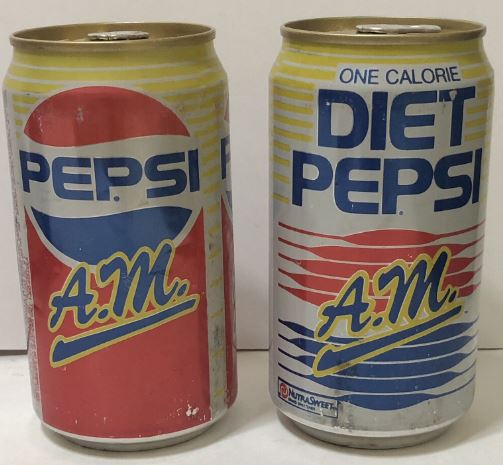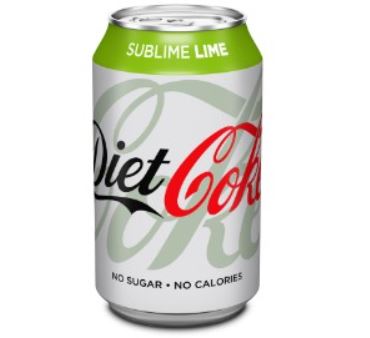We all know that soda isn’t good for us. This is a sad diet truth that just about everyone knows by now. And while sales growth for regular sodas has been slowing dramatically in recent years. Well, a number of diet sprite has been discounted throughout the years and are not coming back. The popularity of sugar and calorie-free drinks notwithstanding. And some were iconic favourites that couldn’t stand the test of time and others were unsurprising flops. However, here are 10 discounted diet sprites that you’ll never see again.
What Is Diet Sprite?
Diet Sprite is a product from the Coca-Cola Company and has been marketed to people who are soda fans but want to lessen their calorie intake. In the manufacturing of sprite diet, sugar or fructose is removed from the ingredients and replaced by a fake sugar, such as Splenda or aspartame, which is sweet to taste but has no calories. Because of this, drinking Diet Sprite is safe since it doesn’t make you any fatter.
Therefore, most people want to know does diet sprite have caffeine. For that purpose, it can be said that sprite like most other non-cola sodas is caffeine-free.
Diet Sprite Nutrition Facts Are Described:
There are only seven ingredients in the Diet Sprite ingredient list. The combination of elements contributes to the final appearance and taste. The first few ingredients are carbonated water, citric acid, and natural flavours, which are responsible for flavour and colour. Acesulfame potassium is an artificial sweetener that is protected by the preservatives potassium citrate, potassium benzoate, and aspartame.
The soft drink Diet Sprite has few calories and zero grams of fat, protein, or carbs. Each serving of Diet Sprite has no calories because it is free of fat, protein, and carbs. Diet Sprite isn’t a significant source of several vitamins, minerals, and nutrients like vitamin A, vitamin C, vitamin B, vitamin D, iron, or calcium, according to the nutrition label.

What Ingredients Are Needed To Make Diet Sprite?
Diet Sprite Ingredients include– carbonated water, citric acid, potassium citrate, natural flavours, potassium benzoate to protect taste, aspartame, and acesulfame potassium.
Diet Sweeteners Sprite:
Soft drinks are well known for their tendency to taste sugary. Sprite Zero, on the other hand, has a sweet flavour. It doesn’t include a lot of sugar or carbohydrates. Table sugar is 200 times sweeter than aspartame and acesulfame potassium combined. There are no calories in them.
10 Best Diet Sprite In The Grocery Stores:
1. TAB:
According to Beverage Daily, Coca-TaB Cola’s diet soda refreshed its last in 2020, which may be the largest loss from the perspective of many diet soda enthusiasts. Despite being a popular soft drink for many people for a long time and being released in the year 1963, TaB wasn’t selling well enough for Coke to continue producing it.
2. Diet Pepsi A.M:

Diet The diet version of Pepsi A.M. was marketed by Pepsi in the late 1980s. The flavour of the sodas was essentially the same as regular Pepsi, but they had 25% more caffeine. Given the variety of energy drinks currently on the market, it’s possible that this beverage was simply invented too early.
3. Diet Crystal Pepsi:
What lofty expectations there may have been for Crystal Clear Coke and Crystal Pepsi. Additionally, there is Diet Crystal Pepsi, which was introduced in 1992. These Crystal sodas were the unmistakable beverages of the 1990s, but unlike neon-hued crop tops and dangly earrings, Crystal Diet Pepsi is not making a comeback. Ever.
4. Tab Clear:
Coca-Cola developed Tab Clear to compete with Crystal Pepsi. According to this Mental Floss article, Tab Clear was actually intended to fail and take Crystal Pepsi down with it. Whatever its intention, Tab Clear vanished along with Crystal Pepsi. However, Coca-Cola saw its journey into clear diet soda as a success as it only took them two months to develop it as opposed to Pepsi’s 18 months for Crystal Pepsi.
5. Diet Coke Plus:
According to Scientific American, the Coca-Cola Company promoted Diet Coke Plus, also known as Coca-Cola Light Plus in several foreign countries, as a healthy beverage due to its high vitamin and antioxidant content. In actuality, this item failed because it wasn’t any healthier than the untreated alternative.

6. Diet 7up Gold:
A spicy, sugar-free drink with a kick of caffeine was called 7UP Gold. This throwback from the 1980s, which was equivalent to an antique spiced ginger ale, was even less popular than the sugary 7UP Gold. A Diet 7UP Gold can currently sell for far over $200 on an online auction site. To be clear, that is an empty can.
7. Diet Coke Lime:
Diet Coke Lime was actually quite a tasty beverage according to many fans, but it just wasn’t moving enough units. In order to minimize bad press, Coca-Cola discontinued the beverage without much in the way of comment, simply ceasing production and shipments in 2018, according to BuzzFeed. You can still create a Diet Coke Lime soda yourself, though, at soft drink machine kiosks found in some fast-food restaurants.
8. Diet Pepsi Jazz:
Pepsi Jazz was available in wacky flavours such as Caramel Cream, Jazz with Strawberries and Cream, and Jazz with Black Cherry and French Vanilla. To be clear, Black Cherry and French Vanilla are two flavours that were intended to blend together with a traditional Pepsi cola flavour.
9. Diet Mountain Dew SuperNova:
In 2010, Mountain Dew launched a promotion with a diet focus named “FanDEWmonium.” At selected tour points, visitors might sample 8 diet flavours with appealing names like Diet SuperNova, Diet Voltage, and Diet Crave. The sodas were then put to a fan vote. Diet SuperNova, a strawberry-melon flavor, ultimately triumphed against Diet Voltage. It was available for 12 weeks but was eventually cancelled because it wasn’t successful.
10. Diet Jolt Cola:
For many years, Jolt Cola had a devoted following. This liquid energy source, which contains twice as much caffeine as regular cola, was available long before energy drinks became popular. Do you prefer your coffee without the sugar? So your best option was Diet Jolt Cola. or a cup of coffee. And today, after a brief comeback in 2017, Brand Informers reports that no form of Jolt is marketed anymore.
What is sprite Zero?
A Sprite version produced by the Coca-Cola Company is called Sprite Zero. This soda is referred to as “zero” to emphasise that it has no sugar, no carbs, and no calories. Artificial sweeteners like aspartame and acesulfame-Potassium replace the sweet flavour. Even though the caffeine is gone and it is citrus-flavoured, it still has the same taste and components as ordinary sodas like coke.
Diet Sprite Vs Sprite Zero:
Diet Sprite and Sprite Zero are for you if you are trying to lose weight but still crave soda. Diet Sprite has a little amount of sugar, calories, and carbohydrates, but these elements are absent from Sprite Zero, so they have no effect on your body.
While Sprite Zero was a revamped version of Diet Sprite designed to further boost its benefits from low calories and low sugar to one that is zero calories and zero sugar, Diet Sprite was established to promote a “diet” soda. In essence, the variations were caused by the marketing plan.
Always consume Diet Sprite or Sprite Zero sodas in moderation. Everything that is consumed in excess is bad, including zero-calorie sodas.
Why Diet Soda Is Bad For You?
You’ve surely heard by now that the notion that diet Coke is healthier than regular soda is a fallacy. Although diet soda may be even riskier than regular soda, both are not particularly nutritious. Most people find this news to be baffling and may wonder “why” or “how?”
It Causes Additional Weight Gain:
Before recent research on the risks of diet soda was published, many people who wished to reduce weight would switch from regular to diet soda. Imagine their shock when they discovered that they not only failed to lose weight but gained more!
Type-2 Diabetes Has Been Connected To It:
Do you believe that the absence of sugar makes diet Coke safe for diabetics? Think again. For people who have already been diagnosed with diabetes, the artificial sweeteners in diet soda can actually raise blood sugar and insulin levels, which can result in diabetic shock.
It May Result In Heart Issues:
Numerous studies have been conducted, and they all show a connection between diet soda use and an increased risk of heart issues such as congestive heart failure, heart disease, and/or heart attacks. The primary offender? Aspartame and other artificial sweeteners are once more to blame. Heart problems can also be caused by other health disorders that might arise from diet soda intakes, such as weight gain, elevated blood sugar levels, and diabetes.
It Can Virtually Double Your Chance Of Suffering A Stroke:
At the International Stroke Conference in 2011, the American Heart Association published a paper that demonstrated how consuming diet Coke could significantly raise your risk of having a stroke by 48%. The taste and brand of diet soda affect how much salt is included in each can. You can anticipate drinking 12 milligrammes of salt on the low end, and more than 5 on the high end.
Conclusion:
However, several men and women shouldn’t use aspartame despite these reports. primarily people who have phenylketonuria, an uncommon disease. The inability to adequately metabolise the amino acid phenylalanine describes it. Avoid using this sweetener, please. The FDA has also heard complaints of aspartame-related nausea, digestive problems, and mood swings.
Consult your doctor and stop using Diet Sprite or any other beverage sweetened with aspartame if you experience any negative effects. The nutrition information on the bottle for Pepsi or Sprite should not be taken as gospel.









